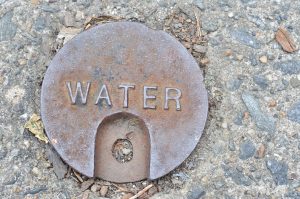Integrated Water Management
Integrated Water Management – what is it and what does it mean? Driven by increasing costs, pollution, conflicts over water and the need to achieve multiple benefits, some communities, at scales ranging from the neighborhood and city to the watershed and basin, are trying to break down the silos in water management to increase sustainability and equitably maximize benefits. So, what does that mean for your watershed and your community? Where has it been used and what are the benefits and challenges? Can it help your community achieve “triple bottom line” (environmental, social and economic) benefits?

To answer some of these questions, River Network is hosting a series of webinars and discussion forums to better understand Integrated Water Management and help create a community of practice among community and watershed groups – all the details are below.
As background, Integrated Water Management has been a term of use for decades and has been defined variously over the years including by the Global Water Partnership, the California Department of Water Resources, and the Water Environment & Reuse Foundation. Reflecting that variability, Integrated Water Management projects also vary greatly from the basin scale like the Yakima Project to the city scale like the work in Cincinnati.
Although the definitions differ, there are a number of common elements including:
- Working across disciplines, departments and political and watershed boundaries
- Seeking multiple benefits – economic, social and environmental – both upstream and down
- Restoring natural hydrology and considering all water (whether drinking water, stormwater or wastewater) as water
- Engaging and listening to a broad range of community members as part of the decision making process to ensure equitable outcomes
- Considering and planning for the impacts of climate change
- Looking for opportunities that are restorative, regenerative and flexible as opposed to linear, wasteful and rigid
For a working definition, we’re using the following for now :
“[I]ntegrated water management” refers to an approach… that centers on breaking down silos to create holistic, coordinated water systems that maximize economic, social, and environmental benefits in an equitable and sustainable manner… integrated water management is an approach to managing water resources that optimizes cross-departmental and multi-jurisdictional coordination and management of water infrastructure… [and] is practiced through inclusive and jointly planned management of all water systems – wastewater plants, water supply systems, stormwater collection, and source water… to create a more secure, flexible, and resilient water future.*
That’s still pretty theoretical, so join us to dig deeper and learn more with the following resources. To join our discussions hosted through the Urban Waters Learning Network please contact Katherine Baer.
River Network’s Integrated Water Management Webinar Series:
- Introduction to Integrated Water Management with speakers from the Broadview Collaborative and Colorado State University One Water Solutions Institute
- Sewage Pollution as a Catalyst for Integrated Water Management with speakers from the Metropolitan Sewer District of Greater Cincinnati and New Jersey Future
- Water Scarcity as a Catalyst for Integrated Water Management with speakers from the Washington Department of Fish and Wildlife and San Francisco Public Utilities Commission
- Strengthening Flood Resilience Through Integrated Water Management with speakers from the City of Cedar Rapids and the Sewerage and Water Board of New Orleans
Learn More:
- Charles River Watershed Association Water Transformation series
- American Rivers Integrated Water Management Resource Center
- Mayors Innovation Project Integrated Water Management
- Water Environment & Reuse Foundation Institutional Innovation for Integrated ‘One Water Management’
- American Water Resources Association Case Studies in Integrated Water Resources Management
*The City Upstream and Down: How Integrated Water Management Can Help Cities Thrive, American Rivers, Great Lakes and St. Lawrence Cities Initiative, The Johnson Foundation at Wingspread, and Mayors Innovation Project (2016).




